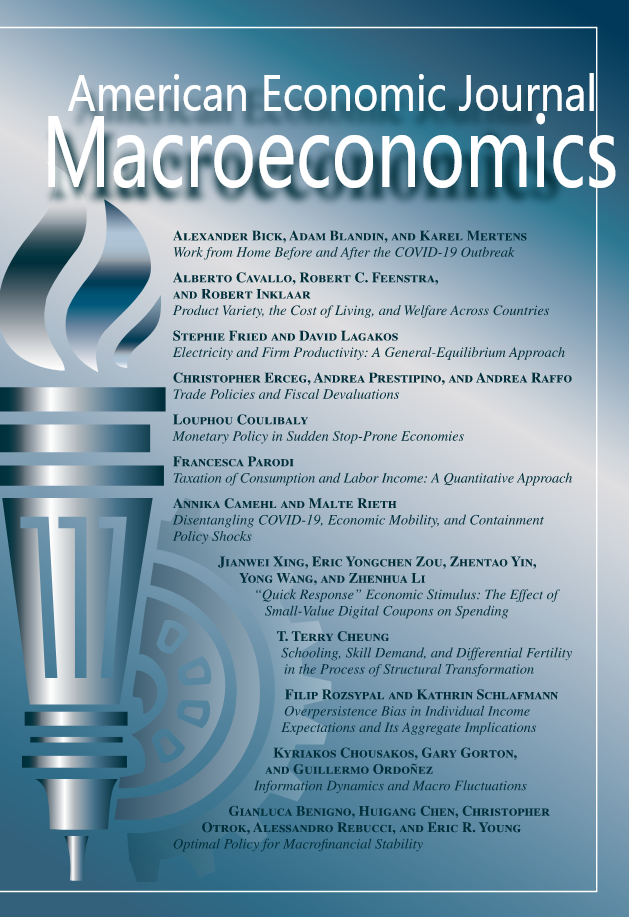泡沫、崩溃与经济增长:理论与证据
IF 5.7
1区 经济学
Q1 ECONOMICS
引用次数: 0
摘要
本文通过构建泡沫、崩溃和内生增长反复出现的模型,分析了近几十年来中国经济增长的起伏。泡沫一旦实现,就会吸引投资,刺激经济增长,但对未来泡沫的预期会挤出投资,降低经济增长。我们通过使用美国数据估计模型来识别泡沫事件。反事实的模拟表明,IT和房地产泡沫不仅引发了经济繁荣,还将美国GDP永久性地提高了近2个百分点,但如果人们相信资产泡沫永远不会出现,美国经济本可以增长得更快。(e22, e23, e32, e44, g14, r31)本文章由计算机程序翻译,如有差异,请以英文原文为准。
Bubbles, Crashes, and Economic Growth: Theory and Evidence
We analyze the ups and downs in economic growth in recent decades by constructing a model with recurrent bubbles, crashes, and endogenous growth. Once realized, bubbles crowd in investment and stimulate economic growth, but expectation about future bubbles crowds out investment and reduces economic growth. We identify bubbly episodes by estimating the model using the US data. Counterfactual simulations suggest that the IT and housing bubbles not only caused economic booms but also lifted US GDP by almost 2 percentage points permanently, but the economy could have grown even faster if people had believed that asset bubbles would never arise. (JEL E22, E23, E32, E44, G14, R31)
求助全文
通过发布文献求助,成功后即可免费获取论文全文。
去求助
来源期刊

American Economic Journal-Macroeconomics
ECONOMICS-
CiteScore
8.20
自引率
1.70%
发文量
58
期刊介绍:
American Economic Journal: Macroeconomics focuses on studies of aggregate fluctuations and growth, and the role of policy in that context. Such studies often borrow from and interact with research in other fields, such as monetary theory, industrial organization, finance, labor economics, political economy, public finance, international economics, and development economics. To the extent that they make a contribution to macroeconomics, papers in these fields are also welcome.
 求助内容:
求助内容: 应助结果提醒方式:
应助结果提醒方式:


